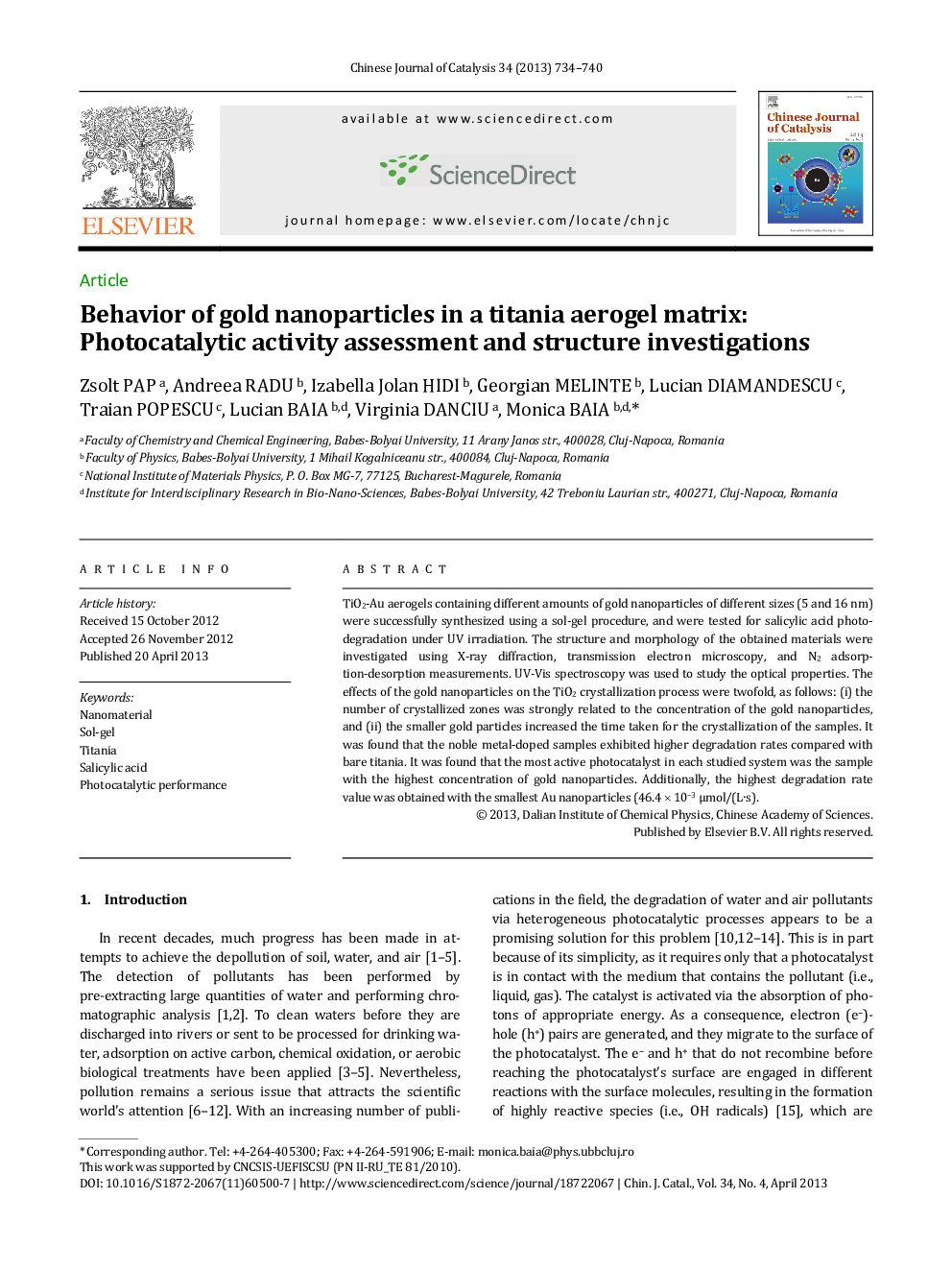| Article ID | Journal | Published Year | Pages | File Type |
|---|---|---|---|---|
| 60096 | Chinese Journal of Catalysis | 2013 | 7 Pages |
TiO2–Au aerogels containing different amounts of gold nanoparticles of different sizes (5 and 16 nm) were successfully synthesized using a sol-gel procedure, and were tested for salicylic acid photodegradation under UV irradiation. The structure and morphology of the obtained materials were investigated using X-ray diffraction, transmission electron microscopy, and N2 adsorption-desorption measurements. UV-Vis spectroscopy was used to study the optical properties. The effects of the gold nanoparticles on the TiO2 crystallization process were twofold, as follows: (i) the number of crystallized zones was strongly related to the concentration of the gold nanoparticles, and (ii) the smaller gold particles increased the time taken for the crystallization of the samples. It was found that the noble metal-doped samples exhibited higher degradation rates compared with bare titania. It was found that the most active photocatalyst in each studied system was the sample with the highest concentration of gold nanoparticles. Additionally, the highest degradation rate value was obtained with the smallest Au nanoparticles (46.4 × 10−3 μmol/(L·s).
Graphical abstractA TiO2-Au aerogel composite was investigated to determine the effects of the presence and size of gold particles on the photocatalytic efficiency of the nanoarchitectures.Figure optionsDownload full-size imageDownload as PowerPoint slide
